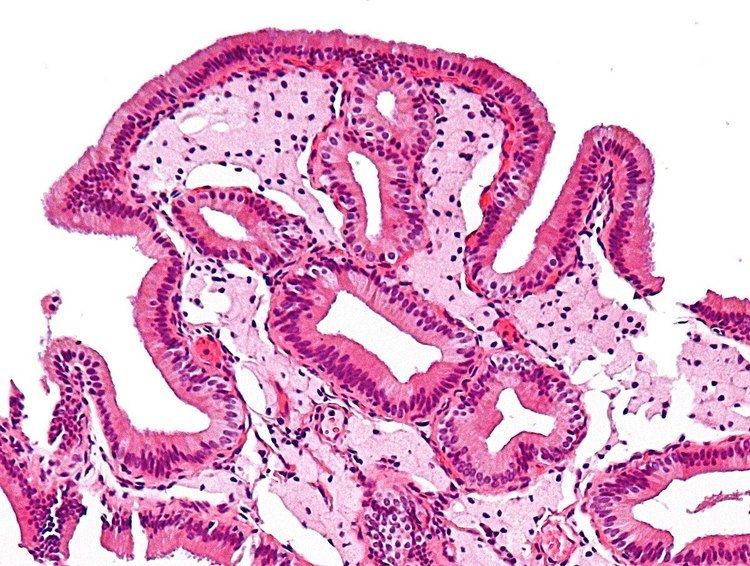 | ||
Foam cells are the fat-laden M2 macrophages seen in atherosclerosis. They are an indication of plaque build-up, or atherosclerosis, which is commonly associated with increased risk of heart attack and stroke.
Contents
Foam cells are formed when the body sends macrophages to the location of a fatty deposit on the blood vessel walls. The macrophage surrounds the fatty material in an attempt to destroy it. The cell becomes filled with lipids (fats). The lipids surrounded by the macrophage give it a "foamy" appearance.
In chronic hyperlipidemia, lipoproteins aggregate within the intima of blood vessels and become oxidized by the action of oxygen free radicals generated either by macrophages or endothelial cells. The macrophages engulf oxidized low-density lipoproteins (LDLs) by endocytosis via scavenger receptors, which are distinct from LDL receptors. The oxidized LDL accumulates in the macrophages and other phagocytes, which are then known as foam cells. Foam cells form the fatty streaks of the plaques of atheroma in the tunica intima of arteries.
Low-density lipoprotein (LDL) cholesterol is contained by a foam cell. LDL is also known as "bad" cholesterol. It becomes a marker for atherosclerosis. Foam cells are the body's way of trying to get rid of bad cholesterol from the blood vessels. Foam cells do not give off any explicit signs or symptoms, but they are part of the origin of atherosclerosis. Foam cells are very small in size and can only be truly detected by examining a fatty plaque under a microscope after it is removed from the body. HDL cholesterol is good cholesterol and it removes harmful bad cholesterol from where it does not belong.
Foam cells are not dangerous as such, but can become a problem when they accumulate at particular foci thus creating a necrotic centre of atherosclerosis. If the fibrous cap that prevents the necrotic centre from spilling into the lumen of a vessel ruptures, a thrombus can form which can lead to emboli occluding smaller vessels. The occlusion of small vessels results in ischemia, and contributes to stroke and myocardial infarction, two of the leading causes of cardiovascular-related death.
Atherosclerosis is the hardening and narrowing of the arteries, due to the formation of plaques in the blood vessel. Atherosclerosis is the usual cause of heart attacks, strokes, and peripheral vascular disease. Together, these diseases are called "cardiovascular disease."
Autoimmunity occurs when the body starts attacking itself. The link between atherosclerosis and autoimmunity is plasmacytoid dendritic cells (pDCs). PDCs contribute to the early stages of the formation of atherosclerotic lesions in the blood vessels. Stimulation of pDCs leads to an increase of macrophages present in plaques.
Infectious diseases
Foamy macrophages are also found in diseases caused by pathogens that persist in the body, such as Chlamydia, Toxoplasma, or Mycobacterium tuberculosis. In tuberculosis (TB), bacterial lipids disable macrophages from pumping out excess LDL, causing them to turn into foam cells around the TB granulomas in the lung. The cholesterol forms a rich food source for the bacteria. As the macrophages die, the mass of cholesterol in the center of the granuloma becomes a cheesy substance called caseum.
Other conditions
Foam cells may form around leaked silicone from breast implants, inhaled organic antigens and some drugs.
